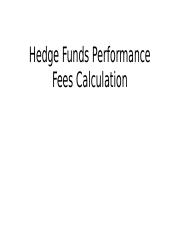
A fee is required to hire a financial planner. There are many types of fees. The most common one is the annual retainer, which can range from $6,000-$11,000 per annum. There are many types and levels of compensation. These include hourly rates as well as fixed-fee package. These are some guidelines that you should keep in mind.
2% to 3%
While 2% to 3% average financial adviser fees may seem like a lot, the figures do not tell the whole story. Although advisers can charge a high percentage of client assets, most charge between 1 and 2%. That number jumps up to 18% for clients with assets over $1million. While most advisers will charge between 1 to 2 percent, there are some that charge much more. AUM fee is the most widely used fee in financial planning.
There are many factors that determine the amount an advisor charges. Some advisors charge a percentage from net worth, adjusted income, or both. Other advisors may charge a flat rate or a percentage for assets under management. Other fees may only be charged if the client’s AUM surpasses certain benchmarks. A general rule of thumb is that the fees charged are higher for more comprehensive services and advice.

$6,000 - $11,000 per year
Some advisors offer complete services, including the creation of a financial strategy for you. Others only provide oversight. Some advisors charge flat fees to cover the costs of creating your plan. These fees generally range between $1,000 and $3,000.
A fee for actively managed portfolios is usually higher than those of inactively managed ones, but may still be lower than those managed by an active investment manager. These funds usually have an investment manager who monitors their performance and generally outperform the benchmark index like the S&P 500. You should be aware of the securities that your advisor will invest in before you sign up for this service. Make sure you know if these investments align with your long term financial goals. Also, consider how much risk you are willing to take.
Hourly
Most people assume that the hourly fees of financial planners are based on the time they spend with each client. This is false. Kitces Research's recent study found that the fee for a financial planner is not directly linked to the time it takes to create a financial program. The statistical relationship between them was not statistically significant. Instead, advisors who have been certified charge more than others.
When considering hourly fees, it's important to remember that these are not directly tied to the value of your investments. The hourly rates for financial planners depend on how much time they have available and the value of your investments. These rates can also differ from advisor-to-advisor. You may also find project-based fees useful if you need an advisor for a particular project. This is a good option if you don't know the person well and are just looking for some advice. It is important to find an advisor with clear project deliverables.

Annual retainer payment
An annual retainer fee is becoming more popular among financial professionals. These fees give clients the peace of mind they need and lessen disruptions to their financial planning because of cost-related issues. They are similar to subscription pricing and provide a steady source of income. Here are some benefits of an annual retainer fee for financial advisors. This pricing model is perfect for long-term client relationships and the growth of wealth.
First, annual retainer payments are more consistent now than they were in years past. Some advisors charge a flat rate based on the client's AUM. Some advisors charge an annual retainer fee. This can vary from $6,000 up to $11,000 depending on which service they provide. Investors need to be aware of the difference between a fee only and a commission-based advisory.
FAQ
What are the Different Types of Investments that Can Be Used to Build Wealth?
You have many options for building wealth. These are just a few examples.
-
Stocks & Bonds
-
Mutual Funds
-
Real Estate
-
Gold
-
Other Assets
Each one has its pros and cons. For example, stocks and bonds are easy to understand and manage. However, they are subject to volatility and require active management. Real estate on the other side tends to keep its value higher than other assets, such as gold and mutual fund.
It all comes down to finding something that works for you. Before you can choose the right type of investment, it is essential to assess your risk tolerance and income needs.
Once you have determined the type of asset you would prefer to invest, you can start talking to a wealth manager and financial planner about selecting the best one.
What is a Financial Planning Consultant? And How Can They Help with Wealth Management?
A financial planner can help you make a financial plan. A financial planner can assess your financial situation and recommend ways to improve it.
Financial planners are trained professionals who can help you develop a sound financial plan. They can assist you in determining how much you need to save each week, which investments offer the highest returns, as well as whether it makes sense for you to borrow against your house equity.
Financial planners are usually paid a fee based on the amount of advice they provide. However, there are some planners who offer free services to clients who meet specific criteria.
What is risk-management in investment management?
Risk management is the act of assessing and mitigating potential losses. It involves monitoring and controlling risk.
Investment strategies must include risk management. The goal of risk management is to minimize the chance of loss and maximize investment return.
The key elements of risk management are;
-
Identifying risk sources
-
Monitoring and measuring the risk
-
How to control the risk
-
How to manage risk
Statistics
- These rates generally reside somewhere around 1% of AUM annually, though rates usually drop as you invest more with the firm. (yahoo.com)
- A recent survey of financial advisors finds the median advisory fee (up to $1 million AUM) is just around 1%.1 (investopedia.com)
- US resident who opens a new IBKR Pro individual or joint account receives a 0.25% rate reduction on margin loans. (nerdwallet.com)
- Newer, fully-automated Roboadvisor platforms intended as wealth management tools for ordinary individuals often charge far less than 1% per year of AUM and come with low minimum account balances to get started. (investopedia.com)
External Links
How To
How to Invest your Savings to Make Money
Investing your savings into different types of investments such as stock market, mutual funds, bonds, real estate, commodities, gold, and other assets gives you an opportunity to generate returns on your capital. This is called investing. It is important that you understand that investing doesn't guarantee a profit. However, it can increase your chances of earning profits. There are many ways to invest your savings. There are many options for investing your savings, including buying stocks, mutual funds, Gold, Commodities, Real Estate, Bonds, Stocks, ETFs (Exchange Traded Funds), and bonds. These methods are described below:
Stock Market
The stock market allows you to buy shares from companies whose products and/or services you would not otherwise purchase. This is one of most popular ways to save money. You can also diversify your portfolio and protect yourself against financial loss by buying stocks. In the event that oil prices fall dramatically, you may be able to sell shares in your energy company and purchase shares in a company making something else.
Mutual Fund
A mutual fund refers to a group of individuals or institutions that invest in securities. They are professional managed pools of equity or debt securities, or hybrid securities. The mutual fund's investment goals are usually determined by its board of directors.
Gold
It has been proven to hold its value for long periods of time and can be used as a safety haven in times of economic uncertainty. Some countries use it as their currency. Gold prices have seen a significant rise in recent years due to investor demand for inflation protection. The supply/demand fundamentals of gold determine whether the price will rise or fall.
Real Estate
Real estate refers to land and buildings. When you buy real estate, you own the property and all rights associated with ownership. For additional income, you can rent out a portion of your home. The home could be used as collateral to obtain loans. The home can also be used as collateral for loans. Before purchasing any type or property, however, you should consider the following: size, condition, age, and location.
Commodity
Commodities include raw materials like grains, metals, and agricultural commodities. As these items increase in value, so make commodity-related investments. Investors who wish to take advantage of this trend must learn to analyze graphs and charts, identify trends and determine the best entry point to their portfolios.
Bonds
BONDS are loans between corporations and governments. A bond is a loan agreement where the principal will be repaid by one party in return for interest payments. When interest rates drop, bond prices rise and vice versa. An investor buys a bond to earn interest while waiting for the borrower to pay back the principal.
Stocks
STOCKS INVOLVE SHARES of ownership within a corporation. Shares represent a fractional portion of ownership in a business. If you own 100 shares of XYZ Corp., you are a shareholder, and you get to vote on matters affecting the company. You will also receive dividends if the company makes profit. Dividends refer to cash distributions made to shareholders.
ETFs
An Exchange Traded Fund (ETF), is a security which tracks an index of stocks or bonds, currencies, commodities or other asset classes. ETFs trade in the same way as stocks on public exchanges as traditional mutual funds. The iShares Core S&P 500 Exchange Tradeable Fund (NYSEARCA : SPY) tracks the performance of Standard & Poor’s 500 Index. If you purchased shares of SPY, then your portfolio would reflect the S&P 500's performance.
Venture Capital
Venture capital refers to private funding venture capitalists offer entrepreneurs to help start new businesses. Venture capitalists lend financing to startups that have little or no revenue, and who are also at high risk for failure. Venture capitalists invest in startups at the early stages of their development, which is often when they are just starting to make a profit.